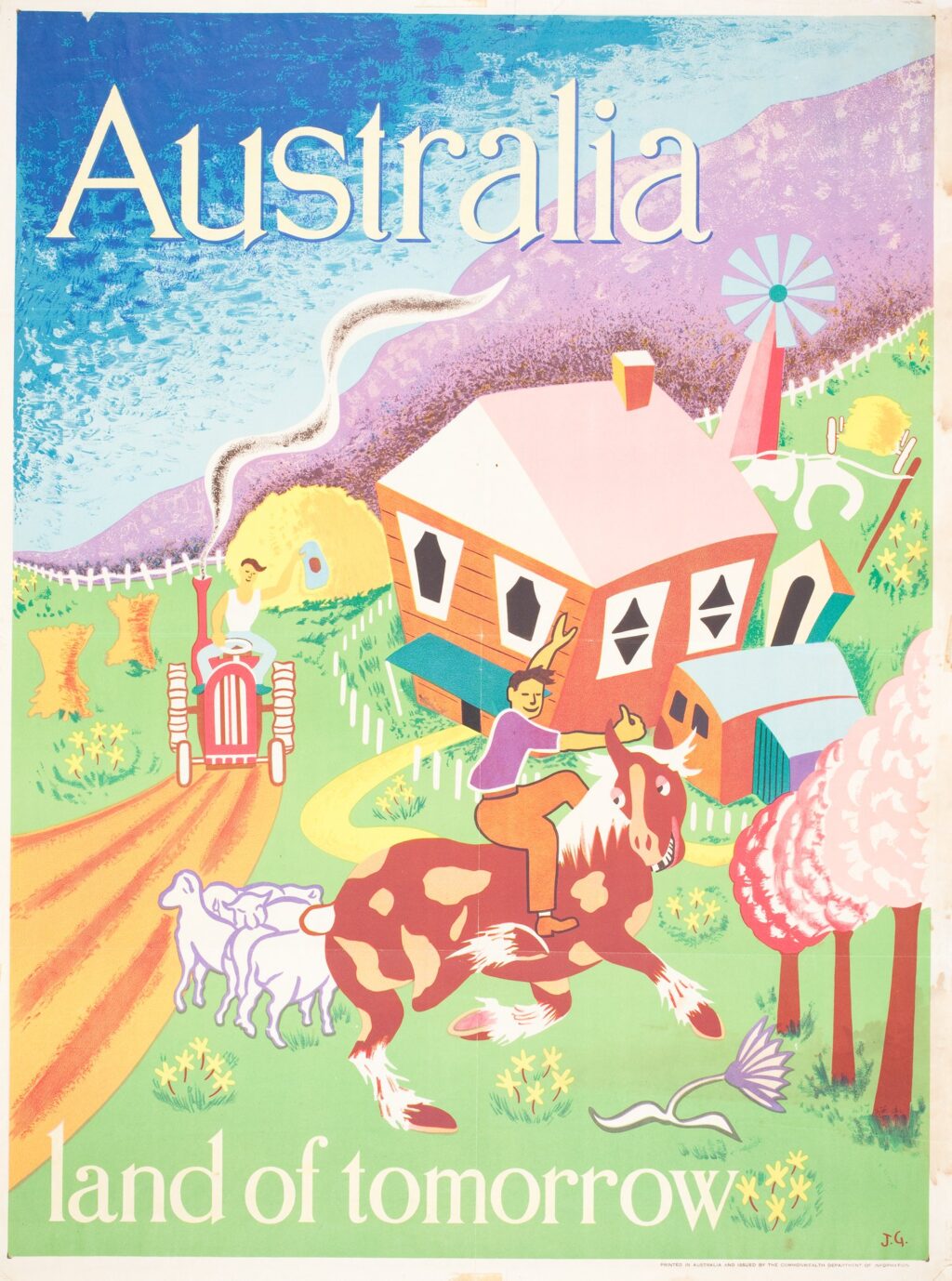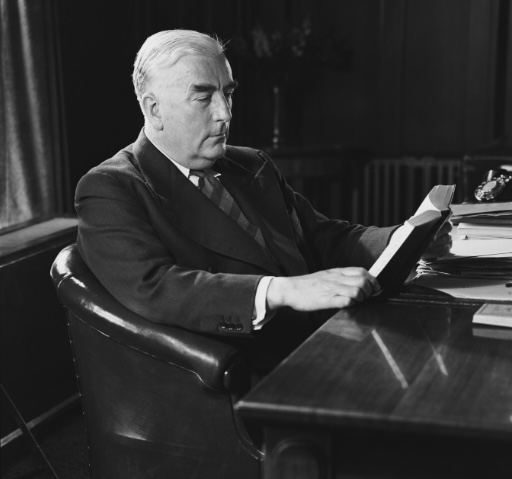On this day, 10 March 1959, Australia’s population is estimated to reach 10 million people. The rapid increase in the number of Australians after the Second World War was a product of the ‘populate or perish’ philosophy which prompted Australia to open its doors to a whole range of Central and Eastern European migrants who had previously been excluded under the White Australia Policy, and also the post-war baby boom which had seen existing Australians multiply like never before. The immigration boom had begun under Chifley and was continued under Menzies, but remarkably, under the Menzies Government not only did housing keep pace with this rapid population growth, but rates of homeownership actually rose from approximately 53% in 1947 to around 71% in 1966.
The triumph of homeownership was no accident, it was a central aspect of Menzies’s philosophy which he had clearly articulated in the Forgotten People broadcasts of 1942. Menzies placed the home at the centre of political discourse, in contrast to the Labor Party whose focus had traditionally been on the workplace. Menzies saw homeownership as the backbone of the middle-class; people who had a ‘stake in the country’ and were responsible for ‘homes material, homes human, and homes spiritual’:
‘The material home represents the concrete expression of the habits of frugality and saving “for a home of our own.” Your advanced socialist may rave against private property even while he acquires it; but one of the best instincts in us is that which induces us to have one little piece of earth with a house and a garden which is ours; to which we can withdraw, in which we can be among our friends, into which no stranger may come against our will’.
Homes human were a place to raise a family, inculcating the ‘noble instinct’ to be with them and to nurture them. Homes spiritual referred to homeownership as an indicator of self-reliance and individual responsibility, which were the underpinnings of true freedom of thought and action.
Menzies’s focus on the home was well-timed, as during the war a shortage of men and materials had led to a housing crisis where there were simply not enough homes, particularly for returning troops. The Labor Government’s solution was the Commonwealth State Housing Agreement of 1945, under which the Commonwealth offered low-interest loans to the States for housing construction, primarily for rental to low-income families.
The focus on social housing and rental over homeownership was a deliberate ideological choice. During the debate over the agreement, Minister for Reconstruction J.J. Dedman stated that ‘The Commonwealth Government is concerned to provide adequate and good housing for the workers, it is not concerned with making the workers into little capitalists’ – an explicit rejection of the Forgotten People with their stake in the country.
Menzies seized upon the ‘little capitalists’ line, which he took as an insult to the aspirational hopes of ordinary Australians, who did want to own their own home one day. He included the quote in both his 1946 and 1949 policy speeches, and his support for homeownership was an important factor in the Liberal Party winning government on their second ever attempt.
Once in office the Menzies Government worked to encourage the growth of homeownership in a number of ways, the most important of which was to promote private enterprise and liberalise the economy by ending rationing and other wartime restrictions, helping to overcome the shortages. Beyond this, Menzies also renegotiated the Commonwealth State Housing Agreement so that first 20% and later 30% of Federal funding was passed on to building societies for lending to people to either buy or build housing, introduced the 1964 Home Savings Grant Scheme to help young couples save for a deposit, and created the Housing Loans Insurance Corporation which encouraged institutional lenders to advance additional loans to homebuyers by insuring loans of up to 95% of the value of a house worth up to $15000.
The result was a great success. Between 1947 and 1971 the total stock of dwellings in Australia increased from 1.92 million units to 4.01million units. The average size of a house grew from 115 square metres in 1955 to 130 in 1970, and the number of rooms per dwelling and rooms per occupant also increased. The boom in housing construction was an important factor in the economic prosperity of the Menzies era, while Australia’s culture would be reshaped by the rise of the suburb and the democratisation of the Australian dream of homeownership.
Further Reading:
Robert Menzies, The Forgotten People 75th Anniversary Edition (Jeparit Press, 2018)
Mikayla Novak, ‘The Condition of the People’ in J.R. Nethercote Menzies: The Shaping of Modern Australia (Connor Court Publishing, 2016).
Judith Brett, ‘The New Forgotten People’, The Monthly, June 2017.
Sign up to our newsletter
Sign up for our monthly newsletter to hear the latest news and receive information about upcoming events.


